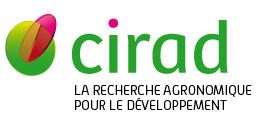Identifying landscape features associated with Rift Valley fever virus transmission, Ferlo region, Senegal, using very high spatial resolution satellite imager
Soti V., Chevalier V., Maura J., Bûˋguûˋ A., Lelong C., Lancelot R., Thiongane Y., Tran A.. 2013. International Journal of Health Geographics, 12 (10) : 11 p..
Introduction: Dynamics of most of vector-borne diseases are strongly linked to global and local environmental changes. Landscape changes are indicators of human activities or natural processes that are likely to modify the ecology of the diseases. Here, a landscape approach developed at a local scale is proposed for extracting mosquito favourable biotopes, and for testing ecological parameters when identifying risk areas of Rift Valley fever (RVF) transmission. The study was carried out around Barkedji village, Ferlo region, Senegal. Methods: In order to test whether pond characteristics may influence the density and the dispersal behaviour of RVF vectors, and thus the spatial variation in RVFV transmission, we used a very high spatial resolution remote sensing image (2.4 m resolution) provided by the Quickbird sensor to produce a detailed land-cover map of the study area. Based on knowledge of vector and disease ecology, seven landscape attributes were defined at the pond level and computed from the land-cover map. Then, the relationships between landscape attributes and RVF serologic incidence rates in small ruminants were analyzed through a beta-binomial regression. Finally, the best statistical model according to the Akaike Information Criterion corrected for small samples (AICC), was used to map areas at risk for RVF. Results: Among the derived landscape variables, the vegetation density index (VDI) computed within a 500 m buffer around ponds was positively correlated with serologic incidence (p<0.001), suggesting that the risk of RVF transmission was higher in the vicinity of ponds surrounded by a dense vegetation cover. The final risk map of RVF transmission displays a heterogeneous spatial distribution, corroborating previous findings from the same area. Conclusions: Our results highlight the potential of very high spatial resolution remote sensing data for identifying environmental risk factors and mapping RVF risk areas at a local scale.
Mots-clûˋs : virus de la fiû´vre de la vallûˋe du rift; ruminant; ûˋvaluation du risque; tûˋlûˋdûˋtection; modû´le mathûˋmatique; cartographie; paysage; transmission des maladies; vecteur de maladie; petits ruminants; fiû´vre de la vallûˋe du rift; sûˋnûˋgal; sahel
Documents associûˋs
Article (a-revue û facteur d'impact)
Agents Cirad, auteurs de cette publication :
- Bûˋguûˋ Agnû´s — Es / UMR TETIS
- Chevalier Vûˋronique — Bios / UMR ASTRE
- Lancelot Renaud — Bios / UMR ASTRE
- Lelong-Richaud Camille — Es / UMR TETIS
- Soti Valûˋrie — Persyst / UPR AIDA
- Tran Annelise — Es / UMR TETIS
